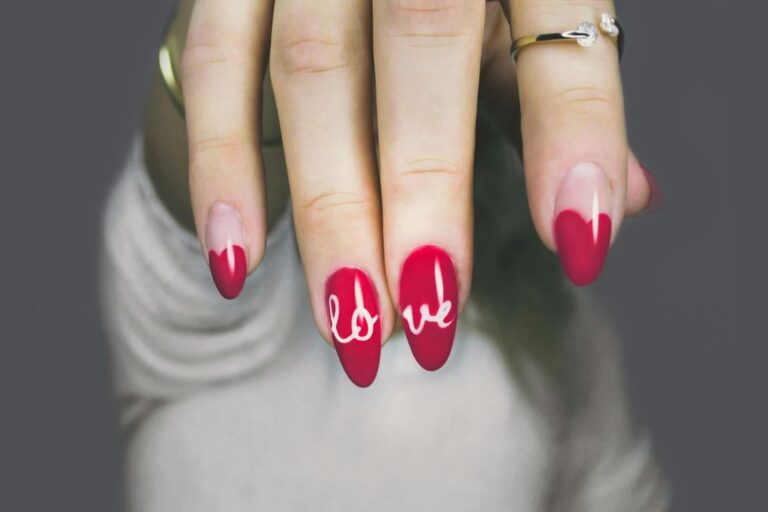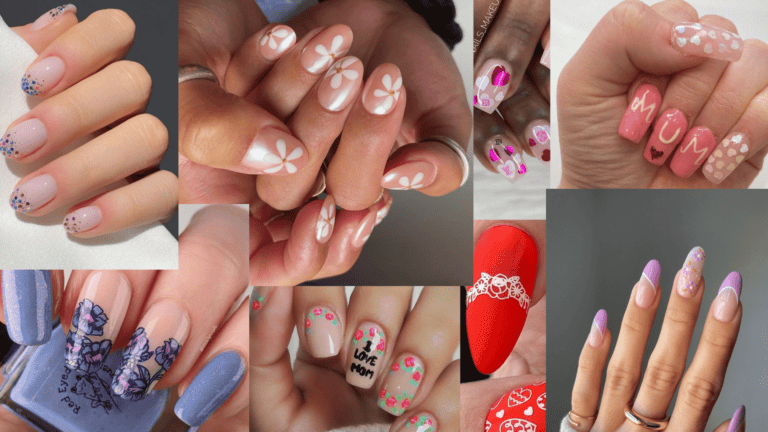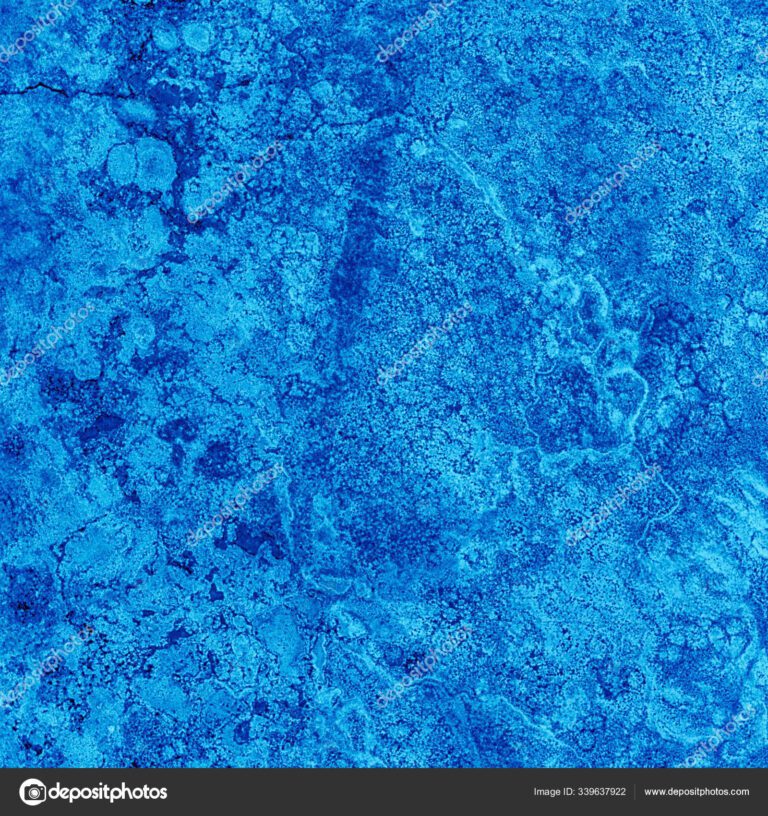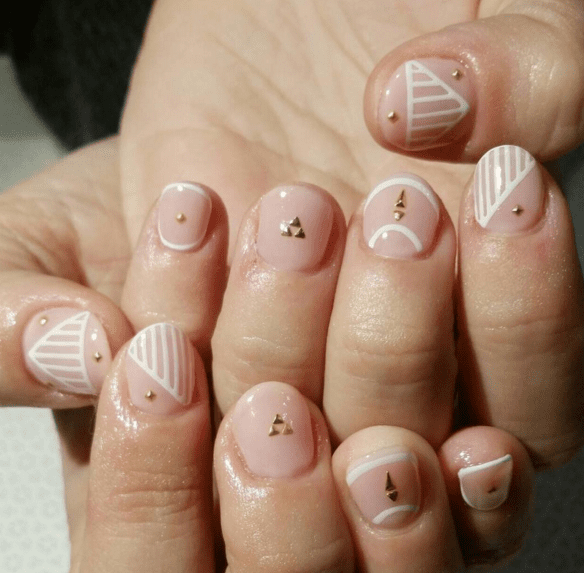“Self-Healing Nails: Can Nails Heal Themselves?”
The ability of nails to heal themselves has been a topic of interest and curiosity. Understanding the anatomy, growth, and healing process of nails is essential in exploring the potential for self-healing. This article delves into the science behind nail regeneration, common injuries and disorders, caring for nails during healing, innovations in nail repair, and dispelling myths and misconceptions about nail healing.
Key Takeaways
- Nail healing is influenced by various factors such as nutrition, trauma, and underlying health conditions.
- Protective measures, proper nutrition, and professional help play crucial roles in the healing process of nails.
- Advancements in nail care products and emerging therapies show promise in enhancing nail repair and regeneration.
- Debunking common nail myths and understanding evidence-based nail care practices are essential for promoting nail health.
- While nails have some self-healing capabilities, there are limitations to their regeneration, and professional intervention may be necessary in certain cases.
Understanding Nail Anatomy and Growth

The Structure of the Nail
The human nail is a complex structure composed of several different parts, each playing a crucial role in protection and sensation. At the core of the nail’s anatomy is the nail plate, the hard and translucent part that we most commonly associate with the nail itself. This plate is made of densely packed cells of keratin, a tough protein also found in hair and skin.
Beneath the nail plate lies the nail bed, a sensitive area rich in blood vessels and nerves, providing the nail plate with nutrients and sensation. The nail bed’s health is essential for the nail’s appearance and function. The cuticle, a protective tissue, seals the space between the nail plate and the surrounding skin, guarding against infection.
The nail’s growth originates from the nail matrix, an area under the skin at the nail’s base. It is here that new nail cells are generated, pushing the older cells forward, causing the nail to grow in length. Proper care of the nail matrix is vital for maintaining healthy nail growth.
Tip: To promote healthy nails, it’s important to avoid damaging the cuticle and to nourish the nail bed and matrix with a balanced diet and appropriate nail care products.
Nail Growth Cycle
The nail growth cycle is a continuous process that involves several stages. Initially, new cells are produced in the nail matrix, located at the base of the nail beneath the cuticle. These cells then keratinize, hardening into the visible nail plate that we see.
- Onychocytes*, the cells that make up the nail plate, are pushed forward as new cells form, causing the nail to grow in length. This growth is typically slow and steady, with fingernails growing faster than toenails. The average growth rate for fingernails is about 3.5 millimeters per month, while toenails grow at about 1.5 millimeters per month.
Factors such as age, nutrition, and health can influence the nail growth cycle. For instance, younger individuals tend to have a faster growth rate compared to older adults. Good nutrition, particularly adequate intake of proteins and vitamins, is essential for healthy nail growth.
Tip: To promote healthy nail growth, maintain a balanced diet rich in vitamins and minerals, and consider taking biotin supplements if necessary.
Factors Affecting Nail Health
The health of our nails is influenced by a myriad of factors, ranging from our daily habits to our overall health status. Nutrition plays a pivotal role, as nails require a variety of vitamins and minerals to grow strong and resilient. For example, deficiencies in iron or biotin can lead to brittle nails or abnormal growth patterns.
External factors such as exposure to harsh chemicals or frequent water immersion can also compromise nail integrity. Protective gear, like gloves, can mitigate these risks. Moreover, lifestyle choices, including smoking, can impair blood flow and thus, nail health.
Stress and hormonal changes are internal factors that can affect nails. They can disrupt the normal growth cycle, leading to issues such as ridges or separation from the nail bed. It’s essential to manage stress and monitor hormonal health to maintain nail well-being.
Remember: Consistent care and awareness of these factors can help maintain healthy nails and expedite healing when necessary.
Common Nail Injuries and Disorders

Types of Nail Trauma
Nail trauma encompasses a variety of injuries that can affect the integrity and appearance of the nail. These injuries can range from minor bruises beneath the nail plate to severe cases where the nail is completely detached. Nail trauma can be acute, resulting from a sudden impact or accident, or chronic, developing over time due to repetitive stress or poor nail care practices.
Common types of nail trauma include:
- Subungual hematoma, where blood collects under the nail
- Nail avulsions, where the nail is torn away from its bed
- Onycholysis, the separation of the nail from the nail bed
- Nail fractures or splits
Tip: Immediate and appropriate care is crucial for nail injuries to prevent complications such as nail deformation or infection.
Understanding the nature of the injury is essential for proper treatment and recovery. While some nail injuries can heal on their own with time and care, others may require medical intervention to ensure proper healing and to restore the nail’s natural function and aesthetics.
Fungal and Bacterial Nail Infections
Fungal and bacterial nail infections are common conditions that can cause discoloration, thickening, and brittleness of the nails. These infections are often the result of exposure to warm and moist environments, poor nail hygiene, or compromised immune function. Early detection and proper treatment are essential for preventing the spread of these infections and promoting nail health. In some cases, antifungal medications or topical treatments may be prescribed to address the infection effectively. It’s important to consult a healthcare professional for an accurate diagnosis and personalized treatment plan. Additionally, maintaining good nail hygiene and avoiding prolonged exposure to damp environments can help reduce the risk of fungal and bacterial nail infections.
Chronic Nail Conditions
Chronic nail conditions are persistent problems that can significantly affect the appearance and health of the nails. Conditions such as psoriasis, eczema, and onychomycosis (fungal nail infections) fall into this category. These ailments often require long-term management and can be exacerbated by environmental factors or underlying health issues.
-
Onychomycosis, for instance, is notorious for its resilience and can be challenging to treat effectively. It’s essential to maintain a consistent treatment regimen and practice good nail hygiene to manage symptoms and prevent worsening of the condition.
-
Psoriasis and eczema affecting the nails can lead to pitting, discoloration, and abnormal nail growth. Patients with these conditions should be aware of the triggers that exacerbate their symptoms and avoid them when possible.
Tip: Keeping nails trimmed and clean can help minimize the risk of exacerbating chronic conditions. It’s also beneficial to keep the nails dry and avoid prolonged exposure to water or irritants.
The Healing Process of Nails

Nail Repair Mechanisms
The human body has a remarkable capacity for healing, and this extends to our nails. The primary repair mechanism for nails involves the growth of new cells at the nail root, located under the cuticle. As these cells multiply, they push the older cells forward, causing the nail to lengthen and gradually replace any damaged sections.
-
Keratinocytes, the predominant cell type in nails, play a crucial role in this process. They synthesize keratin, the protein that gives nails their strength and resilience. When a nail is injured, these cells work overtime to restore integrity to the nail plate.
-
The healing process is also supported by blood flow to the nail bed, which delivers essential nutrients and oxygen necessary for cell regeneration. It’s important to protect the nail during this time to prevent further damage and allow for proper healing.
Tip: Keeping nails trimmed and avoiding harsh chemicals can aid in the recovery process by minimizing stress on the nail structure.
Time Frame for Nail Recovery
The time frame for nail recovery varies depending on the severity of the damage and the individual’s nail health. In general, nails can take several weeks to months to fully recover from trauma or injury. Factors such as the type of injury, presence of infection, and overall nail health play a significant role in the recovery process. It’s important to be patient and consistent with nail care during this period to promote healthy regeneration and prevent further damage. Additionally, avoiding harsh chemicals and excessive manipulation of the nails can aid in the recovery process. Regular moisturization and proper nutrition also contribute to the overall health and recovery of the nails.
Limitations of Nail Regeneration
While nails have a remarkable ability to regenerate after minor injuries, there are inherent limitations to this process. The nail’s regenerative capacity is largely dependent on the health and integrity of the nail bed and matrix. When these areas are severely damaged, the nail may not grow back normally, or at all. This is particularly true for injuries that result in permanent scarring or disruption of the nail matrix.
- Nail growth rates vary between individuals and even between fingernails and toenails. For instance, fingernails typically grow at a rate of about 3 mm/month, while toenails grow more slowly at 1.1 mm/month. The full regeneration time can range from 3-5 months for fingernails to 8-16 months for toenails.
Tip: To support nail regeneration, avoid repeated trauma to the nails and maintain good nail care practices.
Certain conditions, such as chronic nail disorders or systemic diseases, can also impede nail regeneration. In cases of fungal or bacterial infections, the nail may appear to heal but underlying issues can persist, leading to recurrent problems. Additionally, the use of artificial nails, like press-on nails, can limit the durability and longevity of the natural nail, potentially hindering its ability to heal properly.
Caring for Your Nails During Healing

Protective Measures and Treatments
Caring for injured or recovering nails requires a gentle touch and protective strategies. Protective measures, such as wearing gloves when engaging in household chores or using harsh chemicals, are essential to prevent further damage and contamination. It’s also beneficial to apply specialized nail treatments that create a barrier against daily wear and tear.
Hydration is key in the healing process. Regular use of cuticle oils, hydrating soaks, and hand creams can significantly improve the condition of the nails and surrounding skin. For those with particularly brittle or weak nails, nail strengtheners recommended by dermatologists can be incorporated into daily care routines.
Remember: Consistency in applying these treatments is crucial for optimal recovery and protection of your nails.
In addition to topical treatments, it’s important to avoid behaviors that can impede healing, such as nail-biting or picking at the cuticles. By adhering to these protective measures and treatments, you can support your nails’ natural healing process and maintain their health and strength.
Nutrition and Supplements for Nail Health
Adequate nutrition is vital for maintaining the strength and health of your nails. Certain vitamins and minerals play a crucial role in nail growth and repair. For instance, biotin, also known as vitamin B7, is renowned for its benefits to hair, skin, and nails. It aids in the production of keratin, a protein that constitutes the majority of the nail.
In addition to biotin, other supplements such as collagen, omega-3 fatty acids, and vitamins C and E are beneficial for nail health. These nutrients help in maintaining nail hydration, preventing brittleness, and supporting the connective tissue within the nail bed.
Tip: Consistently incorporating these nutrients into your diet can help expedite the healing process and improve overall nail health.
It’s important to note that while supplements can aid in nail health, they should complement a balanced diet rather than replace it. Always consult with a healthcare provider before starting any new supplement regimen.
When to Seek Professional Help
While many nail issues can be managed at home, certain conditions require the expertise of a healthcare professional. Persistent pain, discoloration, or signs of infection are clear indicators that it’s time to consult a doctor or dermatologist. Here are some scenarios when professional help is essential:
- You experience severe trauma to the nail or nail bed.
- There is evidence of fungal or bacterial infection that doesn’t improve with over-the-counter treatments.
- You notice changes in nail shape, thickness, or color that persist.
- Symptoms of a chronic nail condition, such as psoriasis, are present.
Tip: Early intervention can prevent complications and ensure proper healing. If you’re unsure about the severity of your nail condition, it’s always better to err on the side of caution and seek medical advice.
Remember, self-care is important, but when symptoms persist or worsen, professional assessment is key to preventing long-term damage and ensuring the health of your nails.
Innovations in Nail Repair and Regeneration

Advancements in Nail Care Products
The nail care market has witnessed impressive growth, primarily attributed to the rising demand for innovative nail products. Emerging technologies are reshaping the entire nail care industry, promising to make nail art more accessible and durable. Market research indicates that the worldwide market for nail care products is projected to grow at a compound annual growth rate (CAGR) of 4.8%, reaching a value of US$32.5 billion by the year 2024. This growth reflects the increasing interest in nail care and the continuous advancements in nail repair and regeneration. As the industry evolves, it’s essential to stay informed about the latest trends and technologies to make informed nail care choices.
Emerging Therapies for Nail Restoration
Emerging Therapies for Nail Restoration
As the field of nail restoration continues to evolve, there is a growing focus on gene therapies and novel skin grafts. These innovative approaches aim to address the underlying causes of nail damage and promote more effective regeneration. In addition, the use of topical gene therapy has shown promising results in restoring collagen and enhancing the healing process. Researchers are exploring the potential of these advanced treatments to revolutionize the way we approach nail repair and regeneration.
- Gene therapies
- Novel skin grafts
- Topical gene therapy
It’s essential to stay informed about the latest advancements in nail restoration to make well-informed decisions about your nail care.
The Role of Biotechnology in Nail Healing
Biotechnology is playing an increasingly significant role in the field of nail healing and regeneration. Through the development of bioactive polymers and green nanomaterials, scientists are creating innovative solutions that can enhance the body’s natural repair mechanisms. These materials can be designed to release therapeutic agents directly to the damaged nail bed, promoting faster and more effective healing.
One of the promising areas of research involves the use of photosensitizers for the treatment of nail infections, such as onychomycosis. This approach, known as photodynamic therapy, leverages light-sensitive compounds to target and destroy fungal cells without harming the surrounding tissue.
Tip: When exploring biotechnological treatments for nail healing, it’s essential to consider the specificity of the therapy to nail tissue to avoid unwanted side effects.
In addition to direct treatments, biotechnology is also contributing to the development of advanced nail care products. These products may include enzymes, peptides, or other molecules that support nail health and prevent future damage.
Myths and Misconceptions About Nail Healing

Debunking Common Nail Myths
In the realm of nail care, myths and misconceptions abound, often leading to confusion and improper practices. One pervasive myth is that nails need to breathe. Contrary to this belief, nails are composed of keratin and do not require air exchange; the notion of nail breathing is a misunderstanding of their physiology. Similarly, the idea that Russian Manicure and Pedicure require frequent touch-ups is unfounded; these treatments are actually known for their durability.
Another common fallacy is the association of dark nail streaks with ominous health issues. While it’s true that changes in nail coloration should be monitored, many instances of dark streaks are benign and not a cause for alarm. It’s crucial to understand that nail growth rates are primarily influenced by genetics, and no miracle solution can accelerate this process beyond one’s natural capacity.
Tip: Always approach nail care advice with a critical eye and seek information from reputable sources to ensure the health and well-being of your nails.
Understanding the Limits of Self-Healing
Self-healing of nails has its limitations, particularly in cases of severe trauma or chronic conditions. While the body’s natural repair mechanisms can address minor injuries and infections, prolonged neglect or underlying health issues may hinder the self-healing process. It’s important to recognize the signs that indicate the need for professional intervention, such as persistent pain, discoloration, or abnormal nail growth. Seeking timely treatment from a qualified professional is crucial for ensuring optimal nail health and recovery. In some cases, a proactive approach to nail care can prevent the progression of nail disorders and promote faster healing. However, it’s essential to understand that self-healing alone may not always suffice for addressing complex nail issues.
Evidence-Based Nail Care Practices
When it comes to nail healing, there are several myths and misconceptions that can lead to confusion. It’s important to debunk these myths and understand the limits of self-healing. Evidence-based nail care practices are crucial for promoting healthy nail recovery. To ensure you make informed choices, here are some key points to consider:
- Nail healing is a gradual process that requires patience and consistent care.
- Self-healing is limited in cases of severe trauma or chronic nail conditions.
- Nail care products play a significant role in supporting the natural healing process.
Remember, evidence-based nail care practices are essential for achieving optimal nail health and recovery.
Are you tired of dealing with nail problems and myths about nail healing? At NAILinspire.com, we debunk common misconceptions and provide expert advice on nail care. Our ultimate online nail art design library is your go-to resource for all things nails. Whether you’re a nail enthusiast or a professional, we’ve got you covered. Visit NAILinspire.com today and discover the truth about nail healing.
Frequently Asked Questions
Can nails really heal themselves?
Nails do not have the ability to regenerate or heal themselves in the same way that skin does. However, they can recover from damage and grow out over time.
How long does it take for a damaged nail to heal?
The time it takes for a damaged nail to heal can vary depending on the extent of the damage and individual factors. Generally, it can take several months for a completely new nail to grow out.
What are the best treatments for promoting nail healing?
Keeping the nail clean and protected, maintaining a balanced diet, and using moisturizing products can help promote nail healing. In some cases, professional treatments may be necessary.
Are there any natural remedies for nail healing?
Some natural remedies, such as coconut oil, vitamin E oil, and tea tree oil, are believed to support nail health. However, it’s important to consult a healthcare professional before using any natural remedies.
Can nail polish hinder the healing process?
While nail polish itself does not hinder the healing process, it can trap moisture and bacteria, leading to potential nail damage. It’s advisable to allow the nails to breathe and avoid prolonged use of nail polish during the healing process.
When should I seek professional help for nail issues?
If you experience persistent pain, severe nail damage, signs of infection, or any unusual changes in nail growth, it’s important to seek professional help from a dermatologist or healthcare provider.







